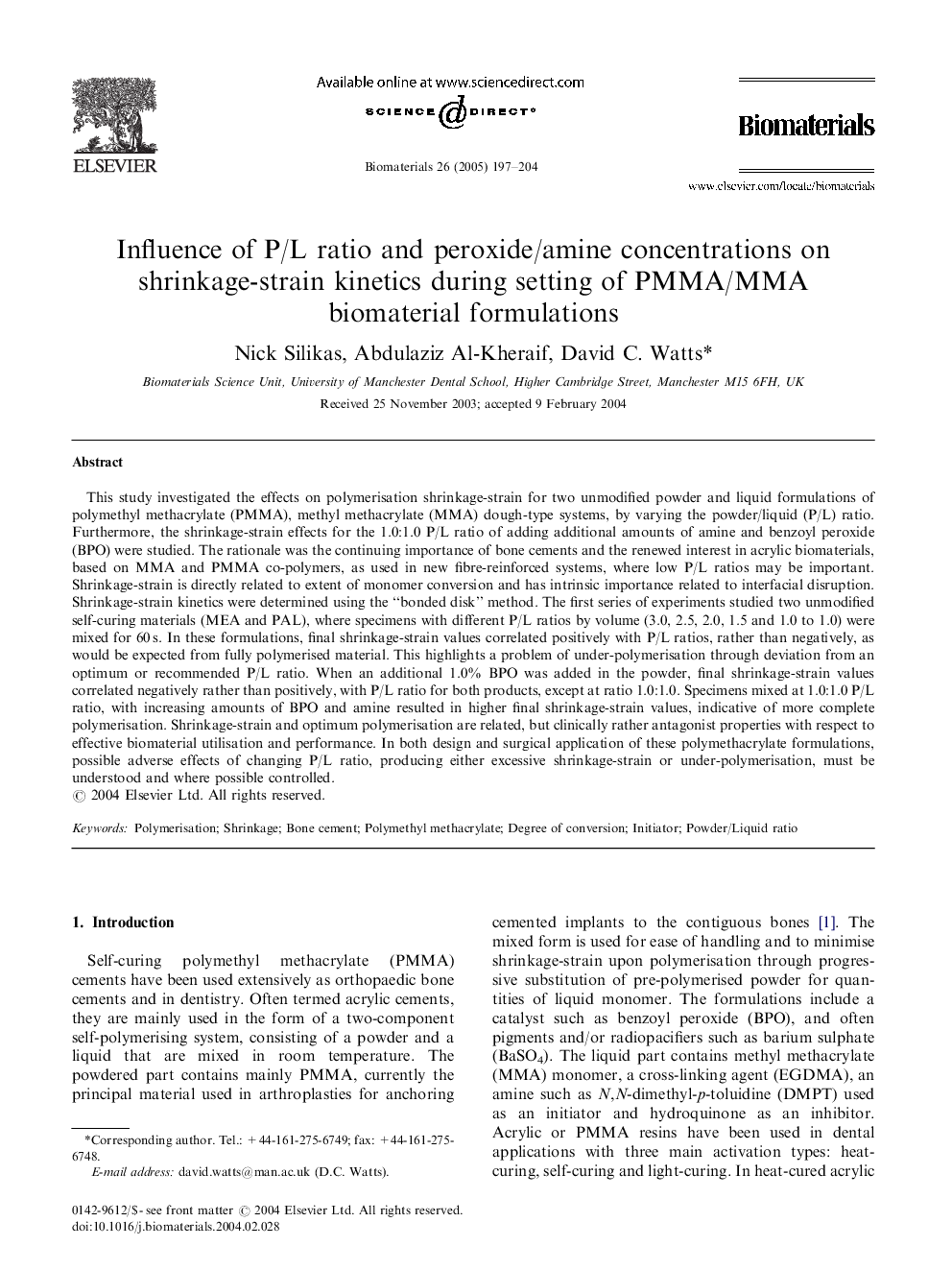| کد مقاله | کد نشریه | سال انتشار | مقاله انگلیسی | نسخه تمام متن |
|---|---|---|---|---|
| 10230250 | 787 | 2005 | 8 صفحه PDF | دانلود رایگان |
عنوان انگلیسی مقاله ISI
Influence of P/L ratio and peroxide/amine concentrations on shrinkage-strain kinetics during setting of PMMA/MMA biomaterial formulations
دانلود مقاله + سفارش ترجمه
دانلود مقاله ISI انگلیسی
رایگان برای ایرانیان
کلمات کلیدی
موضوعات مرتبط
مهندسی و علوم پایه
مهندسی شیمی
بیو مهندسی (مهندسی زیستی)
پیش نمایش صفحه اول مقاله

چکیده انگلیسی
This study investigated the effects on polymerisation shrinkage-strain for two unmodified powder and liquid formulations of polymethyl methacrylate (PMMA), methyl methacrylate (MMA) dough-type systems, by varying the powder/liquid (P/L) ratio. Furthermore, the shrinkage-strain effects for the 1.0:1.0 P/L ratio of adding additional amounts of amine and benzoyl peroxide (BPO) were studied. The rationale was the continuing importance of bone cements and the renewed interest in acrylic biomaterials, based on MMA and PMMA co-polymers, as used in new fibre-reinforced systems, where low P/L ratios may be important. Shrinkage-strain is directly related to extent of monomer conversion and has intrinsic importance related to interfacial disruption. Shrinkage-strain kinetics were determined using the “bonded disk” method. The first series of experiments studied two unmodified self-curing materials (MEA and PAL), where specimens with different P/L ratios by volume (3.0, 2.5, 2.0, 1.5 and 1.0 to 1.0) were mixed for 60Â s. In these formulations, final shrinkage-strain values correlated positively with P/L ratios, rather than negatively, as would be expected from fully polymerised material. This highlights a problem of under-polymerisation through deviation from an optimum or recommended P/L ratio. When an additional 1.0% BPO was added in the powder, final shrinkage-strain values correlated negatively rather than positively, with P/L ratio for both products, except at ratio 1.0:1.0. Specimens mixed at 1.0:1.0 P/L ratio, with increasing amounts of BPO and amine resulted in higher final shrinkage-strain values, indicative of more complete polymerisation. Shrinkage-strain and optimum polymerisation are related, but clinically rather antagonist properties with respect to effective biomaterial utilisation and performance. In both design and surgical application of these polymethacrylate formulations, possible adverse effects of changing P/L ratio, producing either excessive shrinkage-strain or under-polymerisation, must be understood and where possible controlled.
ناشر
Database: Elsevier - ScienceDirect (ساینس دایرکت)
Journal: Biomaterials - Volume 26, Issue 2, January 2005, Pages 197-204
Journal: Biomaterials - Volume 26, Issue 2, January 2005, Pages 197-204
نویسندگان
Nick Silikas, Abdulaziz Al-Kheraif, David C Watts,